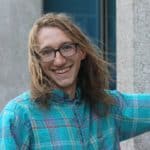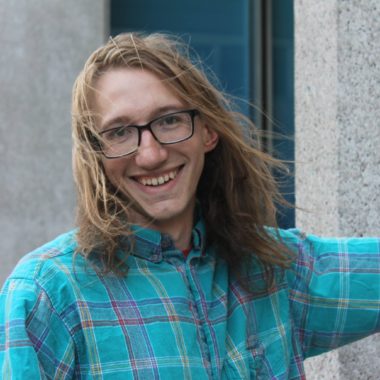By Diehl Edwards
Only 2% of the world’s population has naturally blond hair, and nearly 100% of them are white. Yet for many people the world over of all cultures and ethnicities, skin colors and genders, commit to the often painful process of bleaching their hair. Why is this look valued so highly?
Renowned visual artist John Lucas and best-selling poet Claudia Rankine use prose poetry, found objects, and photography to interrogate this question in their exhibit “Stamped.” The show is the culmination of over two years of work on the part of Rankine and Lucas, who are married.


The show begins with a long list of chemicals that make up “Natural Blonde” hair dye, starting with a tone-setting paragraph. Here’s an excerpt: “It might be a failing that I want people to laugh but I badly do want them to perform amusement on my watch because there is always worry that we are already dying.”
This brimming sentence reveals the show’s focus on the honest and inauthentic ways people display themselves for one another; the artist as the one who “watches;” the sinister pun in “dying”; and the dark undertone present when people alter their bodies to appease a social bias like blonde hair being the best hair.
The photos are close-ups of different dyed-blond hairstyles from across race and gender, presented in provocative framing. “These photos with the large white margins are meant to look more like museum objects,” Lucas told me on the July 27 reception. “The use of the stamps is Claudia’s idea, that blond hair is a kind of currency, one that takes you places.”
He was referring to the title piece, a series of nine images of different dyed hair printed out on hundreds of postage stamps. Rankine also emphasized her partner’s input. “He has the eye,” she told me. “It was his idea to use video images,” she said pointing to another part of the exhibit.
Along with the photos, the artists also collected impromptu street interviews with people who had bleached their hair, asking what motivated them. Selections of the conversations are played on loop from speakers hung in the center of the room. Interviewees knew they were treated better with blond hair, yet few made the association with whiteness. It’s this sort of naiveté that the exhibit addresses.
–Diehl Edwards
Stamped
Pioneer Works
Third floor through August 26th
Author
-

Diehl Edwards is a writer living in Red Hook, currently working on a memoir about his childhood in Appalachia.
View all posts
Diehl Edwards is a writer living in Red Hook, currently working on a memoir about his childhood in Appalachia.











One Comment
If you see coloring your hair as a sign of whiteness, then you will see anything as whiteness. No one I know has ever said ‘I want to dye my hair so I can be seen as more white’. There are as many reason that people dye their hair as there are people dying their hair. I know some women who dye their hair blonde because it make their skin look darker (more tan). Some black women dye their hair blonde because it is ‘different’ or to be noticed. Similar to people dying their hair blue or magenta. Not because the want to see as more ‘blue’. there is a tremendous amount of racism and hatred in the world, but to suggest that women for the most part dye their hair to be more white is simply not true. One last thing, the major of black women that I know that have dyed their hair blonde as some point in their life are the strongest, more confident and proud black women I know.